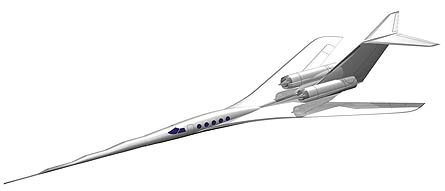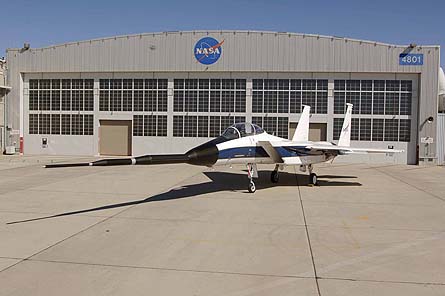Gulfstream will use flight tests of its Quiet Spike on a NASA Boeing F-15B to validate the sonic boom shaping design tools it would use in development of any future supersonic business jet (SSBJ).
Although the flights, to begin this month, are intended to validate the telescoping nose boom's structural integrity and actuation, in-flight measurements will be made of the shockwave signature close to the aircraft, for comparison with Gulfstream's predictions.
|
|---|
| Quiet Spike will divide the bow shock into less-intense pressure waves |
"A second aircraft will probe the supersonic signature in the near field, to see if the wave system is as predicted," says Pres Henne, senior vice-president programmes, engineering and test. The Quiet Spike is designed to divide the bow shock into several less-intense pressure waves, turning the characteristic N-wave sonic boom into a softer S-shaped signature.
Because of the fighter's "massive" shock signature, the three-section nose spike on the F-15, which telescopes in flight from 4.3m (14ft) to 7.3m, will not reduce sonic boom, but should prove the concept, says Henne. On an operational SSBJ, the Quiet Spike would likely have four sections, be smooth rather than stepped when extended, and retract until fully enclosed in the nose.
 |
|---|
| On an operational SSBJ, Quiet Spike will probably have four sections |
Although Gulfstream's SSBJ concept has only a nose boom, Henne says it has yet to be determined whether a tail spike is needed to deal with the aft shock. "We have the forward end tailored very well. The back end is an open debate. We may need a spike."
Source: Flight International
























